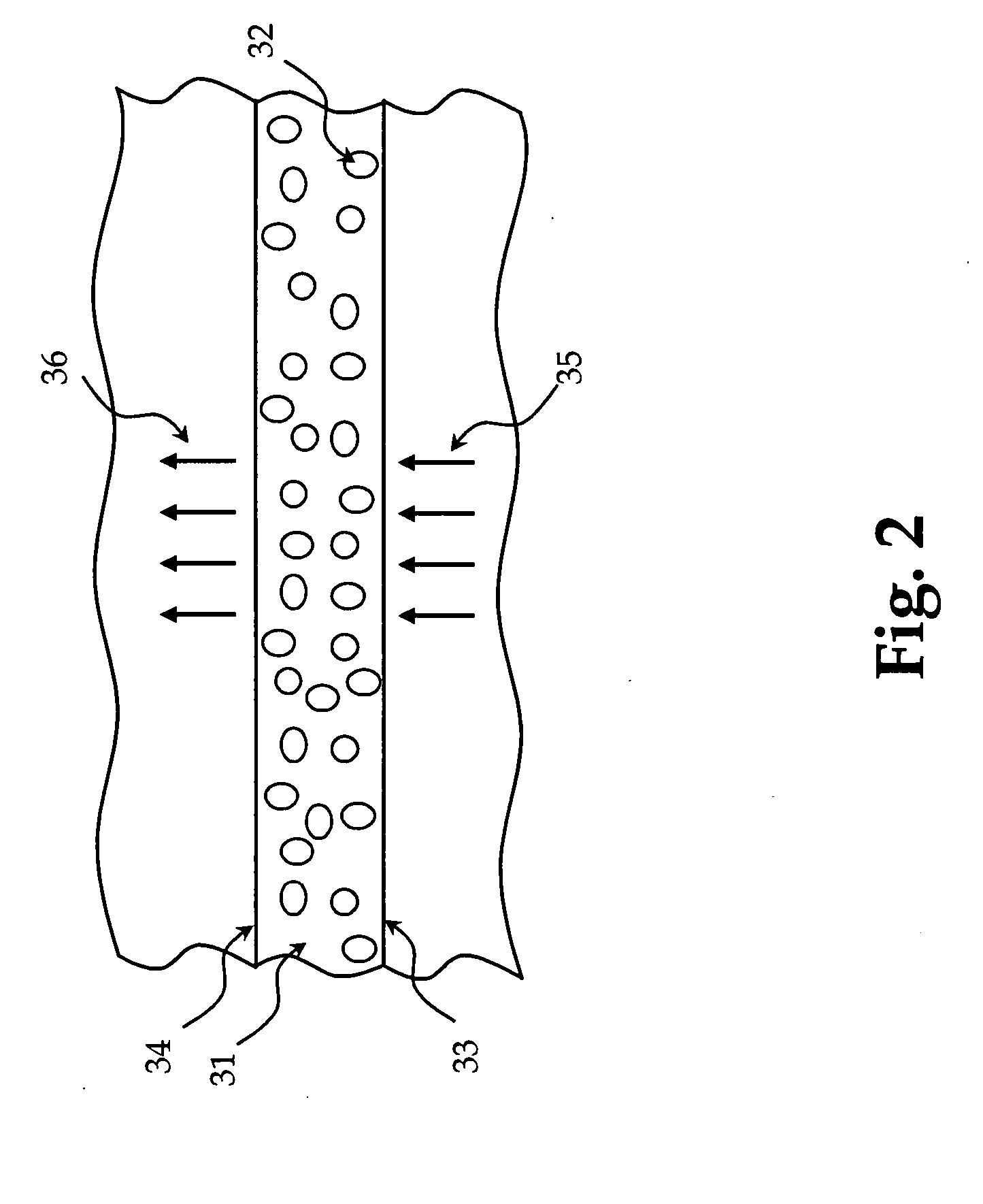Aligned nanostructure thermal interface material
a thermal interface and nanostructure technology, applied in nanoinformatics, light and heating apparatus, transportation and packaging, etc., can solve the problems of limiting the performance factor of many engineering systems, forming small air gaps, and restricting the flow of thermal energy across the interface, so as to achieve the effect of widening the gap
- Summary
- Abstract
- Description
- Claims
- Application Information
AI Technical Summary
Benefits of technology
Problems solved by technology
Method used
Image
Examples
Embodiment Construction
[0031]FIG. 1 depicts a typical thermal packaging solution for a microprocessor used on a desktop computer. In this “flip-chip” configuration, the relevant components include the microprocessor 11, an integrated heat spreader 12, a heat sink 13, the interfaces between these components 15, 16, and the printed circuit board (PCB) substrate 20. Heat generated by the microprocessor during operation is conducted into the heat spreader 12 and subsequently into the heat sink 13 via the interfaces separating these components.
[0032] Continued increases in the processing power of the microprocessor may become limited by the ability to disperse heat, and it is thus beneficial to have a low thermal resistance between the microprocessor and the heat sink. The overall thermal resistance of the package is dominated by the resistance of the interfaces 15, 16, and large performance gains can be realized if the contact resistance associated with these interfaces can be reduced. Although the interfacia...
PUM
| Property | Measurement | Unit |
|---|---|---|
| thermal | aaaaa | aaaaa |
| conductive | aaaaa | aaaaa |
| electric field | aaaaa | aaaaa |
Abstract
Description
Claims
Application Information
 Login to View More
Login to View More - R&D
- Intellectual Property
- Life Sciences
- Materials
- Tech Scout
- Unparalleled Data Quality
- Higher Quality Content
- 60% Fewer Hallucinations
Browse by: Latest US Patents, China's latest patents, Technical Efficacy Thesaurus, Application Domain, Technology Topic, Popular Technical Reports.
© 2025 PatSnap. All rights reserved.Legal|Privacy policy|Modern Slavery Act Transparency Statement|Sitemap|About US| Contact US: help@patsnap.com



